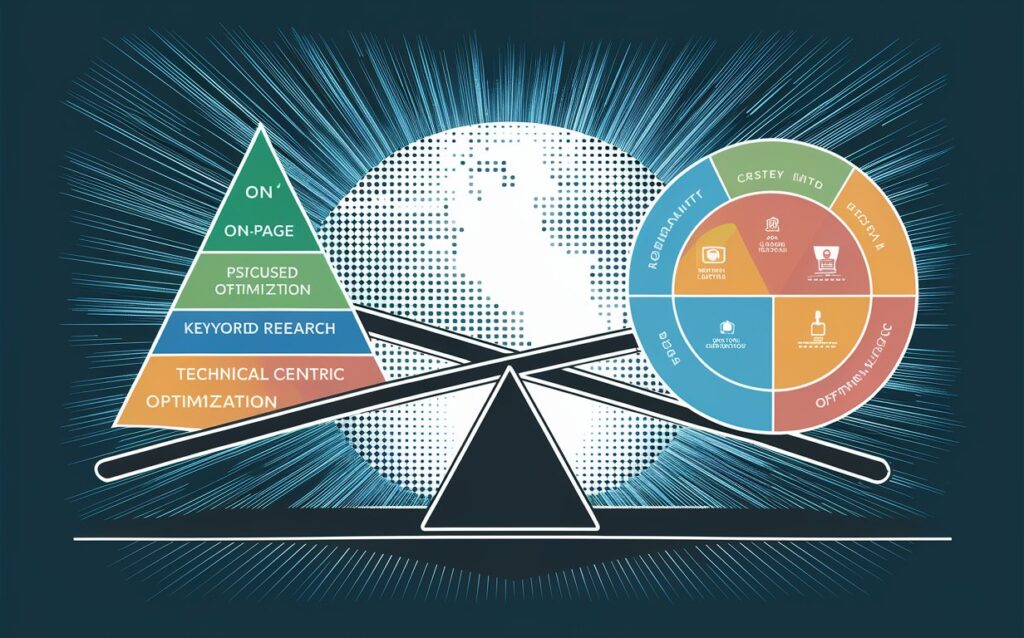Refinance loans come in a myriad of forms, each tailored to meet borrowers’ diverse financial needs and goals. From traditional rate-and-term refinancing that adjusts interest rates and loan terms to cash-out refinancing, allowing homeowners to leverage their property’s equity and streamline refinancing designed for simplicity and cost efficiency, the landscape of refinance loans is varied. Understanding these types can empower individuals to make informed decisions, optimizing their financial strategy to pursue lower payments, better taerms, or improved cash flow.
What Is a Refinance Loan?
A refinance loan is a financial arrangement in which an existing loan is replaced with a new one under different terms. This process is commonly used to take advantage of better interest rates, extend or shorten the loan term, consolidate debt, or switch loan types (for example, from an adjustable-rate to a fixed-rate loan). Refinancing can be applied to various loans, including mortgages, cars, and personal loans. The main goal of refinancing is often to reduce monthly payments, lower the cost of borrowing, or tap into home equity for significant expenses. Borrowers must consider the costs and benefits, including potential fees and how the new loan terms align with their financial goals.
How a Refinance Loan Works
A refinance loan replaces an existing loan with a new one, often under different terms. The primary purpose of refinancing is to secure better interest rates, alter the loan duration, or change the type of loan (for example, from an adjustable rate to a fixed rate). When you refinance, the new loan pays off the balance of the old one. The borrower then makes payments on the new loan, which ideally has more favourable terms, such as a lower interest rate, leading to lower monthly payments, shorter or longer payback periods, or a combination of these benefits. This process is standard in mortgages, auto loans, and student loans. It allows borrowers to adjust their debt obligations to better suit their financial situations or take advantage of improved credit scores or market conditions
Types of Refinancing Loans.
Refinancing loans come in various forms tailored to meet diverse financial needs. Here are a few types:
Fixed-Rate Refinance Loan:
This type of loan allows borrowers to replace their existing mortgage with a new one with a fixed interest rate for the entire term, providing predictable monthly payments.
Adjustable-Rate Refinance Loans:
With an adjustable-rate refinance loan, the interest rate can change over time based on market conditions. This means monthly payments can go up or down, offering flexibility and potentially lower rates than fixed-rate loans.
Streamline Refinance:
- FHA Streamline Refinance: Designed for properties financed with an FHA loan, this option simplifies the refinancing process by requiring less documentation and no appraisal, aiming to lower the interest rate or change the term with minimal hassle.
- VA Streamline Refinance(IRL): Available to veterans, this option under the VA loan program offers an easy path to refinance to a lower interest rate or switch from an adjustable to a fixed-rate loan, often with no appraisal or credit underwriting.
- USDA Streamline Refinance: Targets properties financed through USDA loans, offering a simplified refinancing process to secure a lower interest rate with minimal requirements.
Cash-in Refinancing:
In this refinancing strategy, the borrower pays a large sum at closing to lower their mortgage balance, aiming to secure a lower interest rate, reduce the loan term, or both.
Cash-Out Refinance Loans:
This option allows borrowers to refinance their mortgage for more than they owe and take the difference in cash. It’s often used for home improvements, debt consolidation, or other significant expenses.
Consolidation Refinancing:
Combines multiple loans into a single one, often to reduce the overall interest rate or monthly payment. This can include mixing unsecured debt with a secured loan, like a mortgage, to take advantage of lower rates.
No Closing Cost Refinance:
Offers borrowers the chance to refinance without paying upfront fees or costs at closing. Instead, these costs are either added to the loan balance or covered by a higher interest rate.
Short Refinance:
A less common option is where the lender agrees to forgive a portion of the borrower’s mortgage balance and refinance the remainder into a new, more manageable loan. This is typically used as a foreclosure avoidance strategy.
Pros of refinance loans
Embarking on the path of refinancing your loan can unveil a suite of strategic advantages tailor-made to bolster your financial journey. Delve into the nuanced benefits that refinancing offers:
Expedited Loan Liberation:
Refinancing lays the groundwork for a swifter liberation from your loan’s obligations. This is achieved through either clinching a lower interest rate than your current one or fine-tuning the terms of your loan. This manoeuvre propels you towards a debt-free horizon more rapidly and diminishes the cumulative interest that accrues, thereby economizing your payments throughout the loan.
Diminished Aggregate Loan Expenditure:
One of the most compelling incentives to refinance is the potential to curtail the total financial outlay of your loan. By negotiating a more favourable interest rate or altering the structure of your loan, the aggregate cost incurred throughout the life of the loan can be significantly reduced. This prudent strategy can result in appreciable financial savings, enriching your fiscal health.
Enhanced Monthly Cash Flow:
Refinancing can serve as a conduit to liberate additional funds each month. This is predominantly accomplished by securing a reduction in interest rates or by extending the duration of your loan, thereby lowering your monthly payment obligations. This newfound liquidity can be strategically allocated towards augmenting your savings, investing in prospects, or simply enhancing your monthly budget flexibility.
Stabilized Payment Schedule:
Transitioning from a loan with a variable interest rate to a fixed rate through refinancing can usher in a new era of payment predictability. This stability is invaluable for meticulous financial planning, as it eradicates the unpredictability associated with fluctuating interest rates, thereby ensuring a constant and predictable monthly expenditure.
Equity Access for Financial Flexibility:
Particularly pertinent to homeowners, refinancing can unlock the door to the equity accumulated in your home, providing a versatile financial tool. Once accessed, this equity can fund various endeavours, from home improvements that increase property value to consolidating high-interest debts or covering other significant expenses. This strategic move capitalizes on the equity you’ve built and enhances your overall financial strategy.
With its multifaceted benefits, refinancing stands as a testament to the power of strategic financial restructuring. It offers hope for those seeking to optimize their loan terms, ensuring a more prosperous and financially secure future.
Cons of refinance loans
Refinancing loans can sometimes extend the repayment period, increasing interest. Initial costs, such as application and appraisal fees, can add up, impacting short-term finances. Furthermore, borrowers may miss out on lower-cost opportunities if interest rates decrease after locking in a new rate.
You Might Not Break Even:
Refinancing your loan involves various fees and costs. If the savings from a lower interest rate don’t exceed these costs within a reasonable timeframe, you may not break even, making the refinance financially unviable.
The Savings Might Not Be Worth The Effort:
The process of refinancing can be lengthy and requires substantial paperwork and negotiation. For some, the minimal savings from a slightly lower interest rate may not justify the time and effort spent on refinancing.
Your Monthly Payment Could Increase:
While refinancing is often pursued to lower monthly payments, specific scenarios, such as opting for a loan with a shorter term, can increase your monthly outlay, which could strain your budget.
You Could Reduce The Equity In Your Home:
If you choose a cash-out refinance, you may borrow against the equity you’ve built in your home, reducing your equity. This can be risky if home values decline, potentially leaving you owing more than your home is worth.
How Can You Save Without Refinancing?

Saving money on your mortgage without going through the refinancing process is possible, and it’s a path worth exploring if you’re looking to cut costs without the hassle of a new loan application. Here’s how you can do it:
Extra Payments:
One of the most straightforward strategies is making extra mortgage payments. By paying more than the required amount each month or even making an additional payment or two each year, you can significantly reduce the principal balance of your loan. This shortens the term of your mortgage and decreases the total amount of interest you’ll pay over the life of the loan. It’s a simple tactic but incredibly effective. Plus, it gives you the flexibility to contribute extra funds whenever possible.
Bi-weekly Payments:
Instead of making one monthly payment, consider splitting it in half and paying every two weeks. This results in 26 half-payments or 13 total payments annually, effectively making an extra payment annually. This can shave years off your mortgage term and save you substantial interest.
Budget Review:
Take a closer look at your current expenses and identify areas where you can cut back. Allocating these savings towards your mortgage can help you pay it down faster. It’s all about prioritizing your spending – sometimes, even minor adjustments can free up a surprising amount of money.
Debt Snowball or Avalanche Methods:
These debt repayment strategies can also be applied to your mortgage. Focus on paying off your smaller debts first (snowball) or the ones with the highest interest rates (avalanche). Once those are cleared, you can redirect the funds to make extra mortgage payments. This not only streamlines your finances but accelerates your journey to becoming mortgage-free.
Lump-sum Payments:
If you come into unexpected money, such as a bonus, inheritance, or tax refund, consider using it to make a lump-sum payment on your mortgage principal. These occasional windfalls can make a big difference in the overall interest you pay and the duration of your loan.
Renegotiate Your Mortgage Terms:
While not a refinance, some lenders may allow you to renegotiate the terms of your existing mortgage. This can include adjusting the interest rate or changing other terms that could lower your monthly payments.
The key to saving without refinancing lies in being proactive about finances and seeking opportunities to reduce costs. By employing one or more of these strategies, you can make significant progress toward paying off your mortgage early and saving on interest, all without the need to refinance. Remember, every little bit helps, and the sooner you start, the more you’ll save in the long run.
Conclusion
Navigating the world of refinancing can feel like exploring a maze of opportunities, each path offering its benefits and considerations. Refinance loans come in various types and are designed to meet homeowners’ diverse financial goals and circumstances. From lowering interest rates and monthly payments to tapping into home equity or changing loan terms, understanding the different types of refinance loans is crucial for anyone looking to optimize their mortgage strategy and achieve financial flexibility.
FAQs
Can you refinance to a different loan type?
You can switch from your current loan to a different type when refinancing. This is often done to take advantage of a loan that suits your current financial situation or goals. For example, you might move from an adjustable-rate to a fixed-rate mortgage to secure a consistent payment schedule or refinance from a conventional loan to an FHA loan for more favourable terms.
How do I choose a refinance option?
Choosing the right refinance option involves evaluating your financial goals, current financial situation, and market conditions. Consider your goal: lower monthly payments, a shorter loan term, or tapping into home equity. Also, assess the refinancing costs, including fees and potential interest rates. It’s often beneficial to consult with a financial advisor or mortgage broker to understand the nuances of each option and how they align with your objectives.
Can you borrow more when refinancing?
It’s possible to borrow more than the outstanding balance on your current mortgage through a cash-out refinance. This allows you to leverage the equity you’ve built in your home to obtain additional funds for other expenses, such as home improvements, debt consolidation, or significant purchases. However, it’s essential to carefully consider the implications, as this increases the amount you owe and may affect your loan terms and interest rate.
What steps are involved in refinancing a loan?
Refinancing a loan typically involves several key steps:
- Assessing your financial goals and how refinancing can help achieve them.
- Check your credit score and financial history to ensure you qualify for the best terms.
- Compare offers from different lenders to find the most advantageous deal.
- Applying for the new loan includes submitting financial documents and undergoing a credit check.
- Undergoing a property appraisal if required by the lender to determine the current value of your home.
- Closing the deal involves paying closing costs and signing the new loan agreement.
Can you refinance a loan with the same interest rate?
Yes, you can refinance a loan at the same interest rate, though the benefits typically come from other refinance terms, such as changing the type of loan, the term length, or accessing equity. For instance, refinancing from an adjustable rate to a fixed-rate loan without changing the interest rate might offer the stability of predictable payments.
Can I refinance with the same bank?
Many borrowers refinance with their current lender due to potential benefits such as simplified paperwork, possible loyalty discounts, or a streamlined process. However, shopping around and comparing offers is still advisable to ensure you get the best deal, even if you decide to stay with your current bank.











